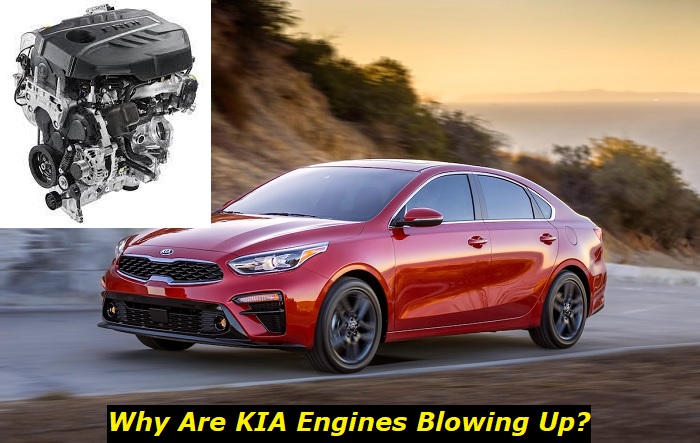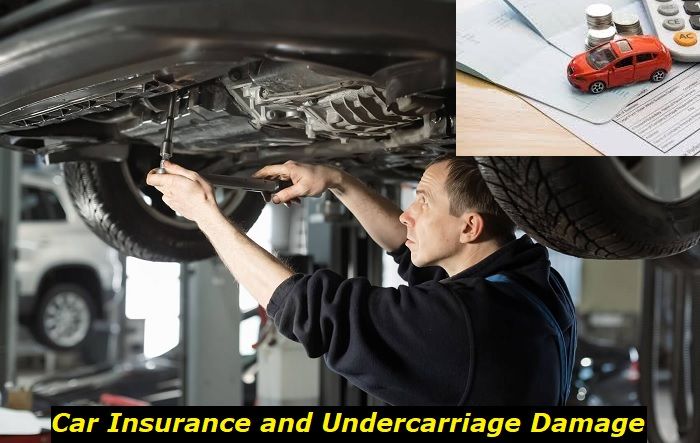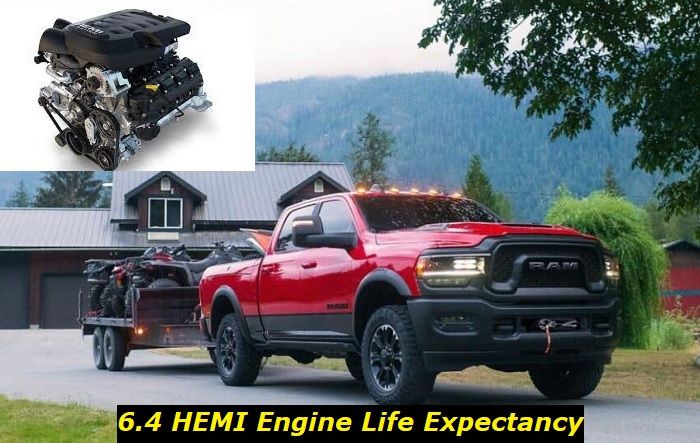KIA engines may blow up because of wrong catalytic converter placement, bad carbon buildup, contamination, overheating, or overloading. In most cases, blowing up is connected with not-good-enough regular service. It means that you can avoid the death of these engines if you pay enough attention to their maintenance and repair.
Engine replacement problems highlights
- Level of urgency:High
- DIY inspection:Impossible
- DIY repair:Impossible
- Cost of repair:$3,000 - $6,500
- Can you drive?No
- Commonreasons:Fatal engine failure, timing belt/chain jumping, overheating, poor lubrication
- Ways to fix:Professional engine replacement

What are the new KIA engines?
Today, KIA turns to hybrid engines but a lot of cars are still equipped with pure-gasoline powerplants. The company uses the new line of Hyundai Smartstream engines. Those use quite modern technologies and are very fuel efficient. They are really powerful and can surprise you with the quality of driving.
Unfortunately, the lifespan of these engines is not huge. They may fail as soon as at 100K miles just because their small displacement is not enough to cover all those driving styles you want to experience. Also, there are several common issues that may kill this engine before you expect this to happen.
Smartstream engines are not bad at all if you compare them with new gas engines from different car manufacturers. But they inherit almost all common problems older KIA engines had and can blow up before you expect this.
By the way, I've also written the article about error messages in Kia vehicles that cover engine problems - you may want to have a look.
What are the common reasons for KIA engines blowing up?
Well, there are hundreds of reasons why your KIA engine may blow up. They keep failing even when they are almost new. I've seen KIA owners thinking of what they should do with their broken engines while their cars only had 40-50 thousand miles on them. This is frustrating! But I also know other KIA owners who happily drive their cars for over 200,000 miles and have no problems with engines.
In Korea, the majority of taxi cars are now Hyundai and KIA with LPG engines, and they drive about 350,000 miles before they are decommissioned and recycled. No one even thinks of repairing or replacing engines in such vehicles. So, let's see the reasons for KIA engines blowing up:
1. Bad placement of catalytic converters
KIA engines and catalytic converters have a certain conflict with each other. It's been about 15 years since this problem was outlined for the first time by mechanics and described in automotive magazines.
The key point is that the converter is situated directly in the exhaust manifold. This allows the converter to work more efficiently and to provide the vehicle with better results in ecology tests. But once the converter is destroyed, parts of the ceramic honeycomb will freely go directly into the cylinders.
This immediately causes bad scratches in the cylinders and the engine is almost certainly killed. Repairing the engine after bad damage is impossible. The lifespan of the KIA cat converter is about 120,000 miles, but some of them may fail earlier.
2. GDI system and carbon buildup
In most engines, carbon buildup can cause bad idling, poor acceleration, etc. But in KIA engines, you may not notice the problem until it actually kills the engine head. I should say that in the newest versions of Smartstream engines, KIA and Hyundai started implementing the combined fuel injection that uses GDI and MPI technologies. This helps you avoid any buildups on intake valves.
But if you have the GDI engine, it's very important to remember that they develop carbon buildup over time and need to be cleaned. Otherwise, the engine death will be much sooner than you think.
3. Overloading problems
KIA engines feel really great. For example, the new 1.6L Smartstream Turbo engine can go just like a V6. It's fast, powerful, and very economical. But the fact that it goes so well makes you press that pedal even harder to feel the pleasant freedom on the road. You should always remember that this is just a small 1.6L engine and nothing more than that. Once you make it work at the edge of its possibilities, it starts wearing out like crazy.
That's why such engines will not actually live more than 120,000 miles without problems. That's too early for an engine to die, but I don't think that many owners can drive those powerplants more than that.
The tendency for downsizing engines and putting huge turbos on them is overall bad for the durability of engines. But when you look at modern KIA engines, this seems to be a really huge problem.
4. Overheating issues
I know that KIA engines have more overheating problems than almost any other brand of engines in the world. They overheat mostly because KIA and Hyundai make performance engines now trying to comply with ecology rules and also the growing demands of car buyers.
Overheating leads to problems with engine heads, turbochargers, head gaskets, etc. Severe overheating may even kill the engine immediately. And I know quite a lot of cases when this happened with modern KIA engines.
It's important to make sure that the cooling system in your KIA is completely OK. If it's not, avoid driving the car till you have the problem solved.
5. Poor block durability
Engine blocks in KIA engines are made of aluminum and they can't be repaired if something goes wrong. If the block is damaged because of the parts of the catalytic converter, it should be replaced. If it's damaged because of overheating, it should be replaced.
But replacing the engine block in any modern KIA may cost almost as much as buying the new engine, so KIA owners rarely do this. In some cases, when the engine is broken, it's cheaper to sell the car at an auction and buy the new one. Labor costs in the US are so bad that any serious repair in your car may end up costing more than the residual value of the vehicle.
So, engine blocks in KIA engines are not eternal, too. And now we see that almost all parts in KIA engines are not really secure and long-lasting.
Are other engines much better?
I'm talking mostly about KIA engines today, so you may think I try to discourage you from buying this vehicle. But actually, the tendency of poor quality engines is now the world's trend in cars powered by internal combustion engines.
Manufacturers are limited by ecology rules and standards that are getting worse every 3 to 5 years. I believe in about 10 years we will not see any pure gas-powered engine that will be able to satisfy the rules and sell legally in the US and Europe.
So, this leads to such problems:
- manufacturers have to downsize the engine - soon, you will not see V6 and V8 powerplants at all;
- they need to use turbochargers to still let drivers use some decent power;
- engines are equipped with a lot of ecology units that are doubtful in terms of durability;
- engines are coded to offer more power from each liter of displacement and this makes them less durable;
- new technologies are all targeted to low fuel consumption and low gas emission, but not at longevity.
So, you see that all manufacturers are now concerned only about emissions and they still try to make their new engines worth buying in terms of the quality of driving. It means that you will most likely get a short-lasting engine that will ask for some repairs pretty often if you are buying a modern vehicle.
How can you prolong the life of the KIA engine?
Yes, you can ensure that your KIA engine will drive as long as possible just by following these simple yet important tips:
- always make sure that the engine doesn't overheat - even slight overheating may be really dangerous;
- don't forget that the vehicle needs high-quality fuel;
- maintain the engine regularly, change oil and air filters each year and the fuel filter once every two years;
- inspect your catalytic converter and replace it before it starts destroying, otherwise, you can get into trouble.
I also recommend having the engine inspected in the KIA dealership or in the specialized repair shop. Just ask a mechanic to check the engine so that they could identify all problems while they are minor and don't affect the longevity of the unit.
Just by following these simple tips, you will be able to dramatically increase the lifespan of the engine in your KIA vehicle. But don't think it will live 300K miles without any problems because, most likely, it won't.
About the authors
The CarAraC research team is composed of seasoned auto mechanics and automotive industry professionals, including individuals with advanced degrees and certifications in their field. Our team members boast prestigious credentials, reflecting their extensive knowledge and skills. These qualifications include: IMI: Institute of the Motor Industry, ASE-Certified Master Automobile Technicians; Coventry University, Graduate of MA in Automotive Journalism; Politecnico di Torino, Italy, MS Automotive Engineering; Ss. Cyril and Methodius University in Skopje, Mechanical University in Skopje; TOC Automotive College; DHA Suffa University, Department of Mechanical Engineering






Add comment